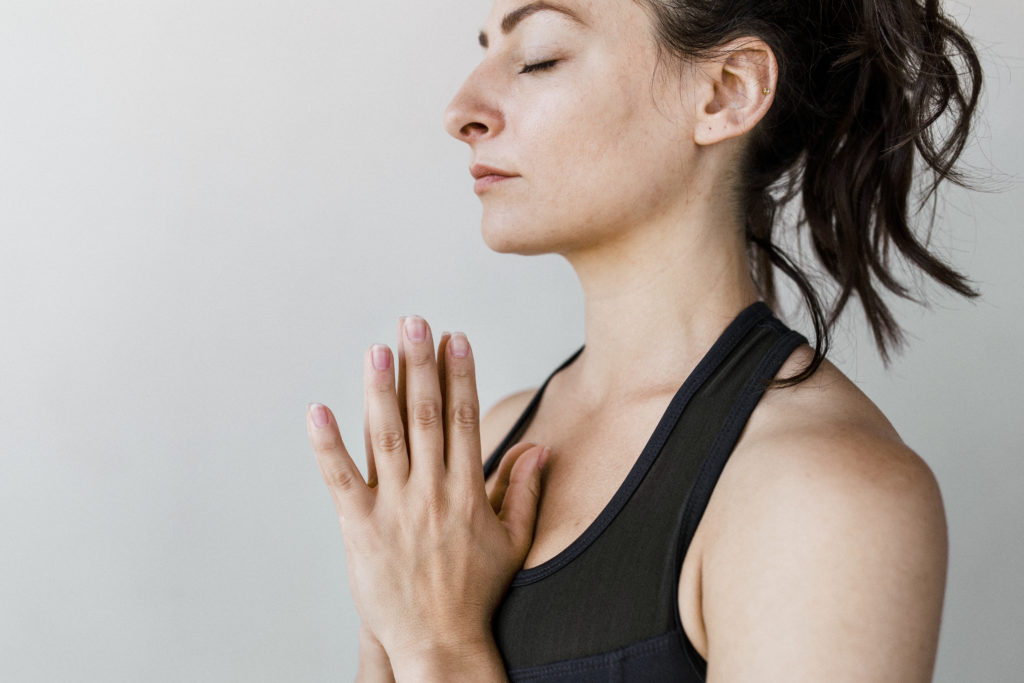No doubt you’ve heard someone spouting the virtues of “living mindfully.” But hearing it doesn’t mean understanding it. Our CEO, founder, and principal broker Harout Keuroghlian describes mindfulness as “pausing with purpose.” And he believes in the concept so much that he’s incorporated it into JohnHart’s 12 Skills for Exponential Growth in Real Estate. Mindfulness promotes living in the “here and now” as opposed to future tripping or dwelling on the past. But it doesn’t happen by accident. It’s achieved through intentional, consistent practice. And once you’ve found your rhythm with your mindfulness practices, they can unlock great potential in the workplace and beyond.
The Horrors of the Unmindful Mind

With the way that our society is structured, it can be easy to slip out of mindfulness. Enter the unmindful mind: a chaotic space teeming with tension as problem-solving is rehearsed ad nauseam and thoughts are overcooked resulting in formless mush. The unmindful mind is constantly sapped of vitality by randomly firing distractions and a persistent current of leeching negativity. Therefore, it’s fertile ground for the growth of stress, anxiety, and even depression.
When you have trouble focusing because of a glut of random thinking, negative emotions can stain your every decision. It’s comparable to being inebriated. It becomes worse for those who attempt to multi-task, allowing further distractions and diversions. Some even define “forgetfulness” as the antonym of mindfulness. And we all know what forgetfulness does to a streamlined working environment.
Fortunately, this cerebral house of horrors isn’t “just a part of life”. You can leave it whenever you want simply by adopting mindfulness practices.
Seizing Control with Mindfulness Practices

The role of mindfulness in the workplace is more important today than it’s ever been. Employees who consistently engage in mindfulness practices find a deeper understanding of their thinking patterns. Therefore, they can further refine their decision-making processes for improved efficiency and effectiveness. Likewise, research shows that employees who move away from multitasking in favor of single tasking often access a boost in efficiency and quality of work.
But mindfulness practices can also help you outside of the office. It builds heightened control over your personal responses to your environment, leading to an almost unbreakable poise. And while that certainly comes in handy during the negotiation process in the real estate industry, such a level of control is an asset in all walks of life.
Types of Mindfulness Practices
Fortunately, mindfulness practices are plentiful, so it’s easy to find an exercise for every taste. Arguably the most common mindfulness exercise, meditation can be executed in several manners. However, not all meditation types develop mindfulness. For example, Transcendental Meditation practices oppose mindfulness by their very nature. Does this mean Transcendental Meditation is incorrect? No, it simply means that this particular meditation style is meant to service other aspects of the mind, body, and spirit.

But meditation isn’t the singular path to mindfulness. The state can be regularly practiced through:
- Breathing methods
- Certain types of meditation
- Present moment thinking
This isn’t an exhaustive list. For instance, certain exercises based around polyvagal theory could be said to develop mindfulness. But in most cases, mindfulness is developed through consistent practice of the above methods.
Mindfulness Practice: Breathing Exercises
While meditation is the most popular type of mindfulness exercise, certain meditations incorporate breathing methods. Therefore, we’ll start by taking a closer look at how conscious, deliberate breathing can help develop your mindfulness.
Harout suggests a simple breathing method that can be easily employed in the heat of the moment. When faced with adversity, he recommends taking three quick inhalations followed by three quick exhalations before addressing the challenge. This creates a moment of calming clarity so you can make decisions without mental pollution. But there are several other breathing methods you can employ on your path to mindfulness.

Mindful Breathing
Breathing comes automatically to us, so you may have never paused to reflect on the actual action of inhalation and exhalation. But simply observing your breathing is a popular way to quickly find mindfulness. With mindful breathing, you’re discouraged from altering the depth, frequency, or any other aspect of your breathing. Just let these inhalations and exhalations come naturally. Pay close attention to the physical nature of breathing; the way a nostril flares or the cool air feels across your lips.
Don’t become alarmed if your mind drifts to a nagging responsibility, an impending date, or even what you’re eating for dinner. But upon realizing that your mind has wandered, gently lead it back to a tight focus on your breathing. This breathing method is a potent way of developing mindfulness, even if simply engaged for a minute every day.
Counting Deep Breaths
Many breathing methods encourage you to alter your natural breathing patterns and rhythms for the duration of the exercise. To execute this simple yet effective exercise, you need to breathe in so deeply that you can feel it in your diaphragm. Unfamiliar? The diaphragm is a respiratory muscle that you can feel contract during deeper inhalations. Still having trouble finding it? Hold one hand lightly against your chest and the other lightly against your abdomen. The hand on your abdomen will rise in time with your slow, deep inhalation, signaling the contraction of your diaphragm.

Breathe deeply and exhale fully while counting each breath to keep you centered and focused. If you’re new to breathing methods, you’ll likely experience some temporary lightheadedness as a result of this exercise. Use that as a cue to relax back into a quicker, shallower breathing style. If you’re still experiencing lightheadedness, be cautious about standing up too quickly. You’ll know that this breathing method is working if you feel a profound sense of tranquility.
Timed Breathing
You’ll also find a variety of breathing methods that challenge you to hold out portions of the breathing process to meet a certain ratio. In most of these cases, you’ll be holding the exhalation for a longer count than the inhalation or the held breath. This is because exhalations create a cue for our parasympathetic nervous system, the part of the body that promotes slower breathing, heartbeat, and blood pressure.
Some of these breathing methods completely do away with holding your breath. For example, one popular method requires you to inhale for two seconds and immediately exhale for four seconds. Another popular timed breathing method suggests that you inhale for four seconds, hold your breath for seven seconds, and then exhale slowly and fully for eight seconds. Ultimately, it’s up to you to decide which one of these methods works best for you.
Mindfulness Practice: Meditation
Again, meditation is easily the most popular mindfulness practice… and one of the most effective. Research suggests that meditation can help you treat various conditions including:
- Anxiety
- Depression
- High Blood Pressure
- Insomnia
- Pain
- Stress
But not all meditation helps you develop mindfulness. You need to choose a meditation style that prioritizes focus. Therefore, meditations that utilize breathing methods are typically a safe bet. When doing this kind of meditation, you are challenged to maintain a focus on the present. It’s nearly impossible to prevent your mind from drifting. However, you can simply guide your wandering mind back to its focus once you realize the distraction. Guided meditations can also be helpful.
If you’re looking for a more structured meditation method, the following techniques boast a proven track record of success:
Body Scan Meditation

This type of meditation can help you identify ailments or even emotional trauma that gets trapped in the body. Simply lie face up with your legs flat on the ground and your arms at your sides. Gradually draw your attention to specific points of your body, moving from the top to the bottom and then back to the top. Try to assess any feeling of discomfort or pain, as well as any noticeable emotion or physical feeling you experience.
Sitting Meditation
Adopting the standard pose for meditation, sitting meditation suggests you sit comfortably with your feet on the floor and back supported. Your breathing exercises will come in handy with this prevalent method of meditation. Making sure to breathe through your nose, focus all of your attention on the inhalation and exhalation of your breath. Your mind will likely wander, but just let intrusive thoughts pass. Then, easily guide your thoughts back to a tight focus on your breathing.
Walking Meditation
Probably the rarest mode of meditation, walking meditation challenges you to find an area about four to seven meters in length. This area should also be free of outside distractions. Slowly walk this length, carefully noticing everything you can about the experience. Pay particular attention to the ways your body corrects itself to successfully achieve balance. Upon reaching the terminus, turn around and begin your walk back in the same manner.
Mindfulness Practice: Present Moment Thinking
When seeking mindfulness, it’s important to avoid the trappings of the past and the future. Rather, mindfulness favors the present. This doesn’t just mean focusing on one task at a time (although that’s part of it). It means paying close attention to your mind, body, feelings, and your surrounding environment.
One way that you can develop present moment thinking is by enjoying meals without distractions. Do you watch TV while you eat? Challenge yourself to instead eat in stillness and silence, closing your eyes and savoring the complex flavors and textures of your meals. If you still feel like you need help understanding present moment thinking, Eckhart Tolle’s The Power of Now is considered a contemporary bible on the subject.
The Mindful Mind
Once you’ve developed a firm grasp of mindfulness, you’ll likely see the working landscape change before your eyes. Unhindered by the past and freed from obsessive thoughts of the future, your decisions will be based on present factors. And those decisions won’t be confused by unrelated emotions. You’ll finally be able to seize the day with a new clarity distinguished by its calm collectedness. Challenge yourself to recondition the way you think by employing mindfulness practices. It will not just improve your career, but your general quality of life!


